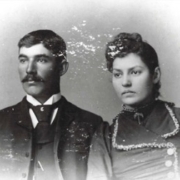If the weight-loss drug market is a tide, Novo Nordisk (NVO) stands at its crest. As investors, when we seek promising ventures, we look for history, market presence, and future potential–and this Danish pharmaceutical powerhouse seems to tick all these boxes.
Dive into the annals of Novo Nordisk's story, and you'll find a century-old legacy predominantly immersed in diabetes treatment. This enterprise, with Eli Lilly (LLY) and Sanofi (SNY), once commanded an impressive 90% insulin market share.
But things changed when Sanofi made its exit in 2019, setting the stage for Novo Nordisk's next significant act. Though others such as Merck (MRK), Johnson & Johnson (JNJ), and AstraZeneca (AZN) are present in the diabetes space, they operate in unique niches, focusing primarily on small molecules.
So, what is Novo Nordisk's contemporary claim to fame? It’s none other than the weight-loss drug, Wegovy.
As of its recent U.K. debut, Wegovy is now associated with the National Health Service. This was a strategic move that saw the company's value soar, comfortably eclipsing the luxury behemoth Louis Vuitton (LVMH).
The numbers speak for themselves: Novo Nordisk's stock surged 40% this year, pushing its market cap to an enviable $428 billion.
If they were based stateside, this positions them as the 14th most valuable entity in the S&P 500.
What's truly jaw-dropping is the scale of Novo Nordisk's success. It achieved European market leadership with Wegovy's debut in just five significant markets: Denmark, Norway, Germany, the U.S., and the U.K. The demand seems to be exploding every time the drug lands in a new market.
Meanwhile, their main competitor, Eli Lilly, isn't actually that far behind. Bolstered by their Mounjaro drug, they've seen a stock uptick of 52% this year.
Novo Nordisk's current revenue is approximately $26 billion, predominantly from its diabetes drugs lineup. However, by 2030, forecasts predict the obesity market could range from $30 billion to even $100 billion.
And only a few major players are in line to capitalize on this. Notably, Novo Nordisk and Eli Lilly are poised to dominate this space, with a combined projected market share of 82%.
Furthermore, whispers in the pharmaceutical sector suggest that Novo's golden molecule, semaglutide, has broader applications. Beyond diabetes and obesity, it might target three substantial markets in the coming decade.
Firstly, the cardiovascular space, valued at $162 billion in 2022, presents significant potential. Early indications reveal that semaglutide might offer protective benefits against cardiovascular threats. If Novo gains the necessary approvals, its market share could rise substantially.
Secondly, non-alcoholic steatohepatitis (NASH) affects nearly 30 million Americans. Market evaluations for this condition vary, with some projections reaching $62 billion by 2031.
Novo Nordisk is already deep into phase 3 clinical trials, and if semaglutide proves effective here, it would be another feather in the company's cap.
Lastly, the treatment of addiction disorders could be an untapped market for semaglutide. Preliminary research shows promise, but real-world human trials are still in their infancy. If validated, this could open another revenue stream for Novo Nordisk in the years to come.
Overall, Novo Nordisk is more than just a pharmaceutical company; it's a saga of consistent growth, innovation, and potential.
If you had invested in its shares between 2017 and 2019, today's valuation would offer substantial returns.
Admittedly, the current valuation is on the higher side. Still, context matters.
In light of the above, my advice is two-fold. For those eyeing short-term gains, a 'Hold' might be the best strategy for Novo Nordisk. But if you're in it for the long haul, with a decade or more in view, this is a definitive 'Buy.'


